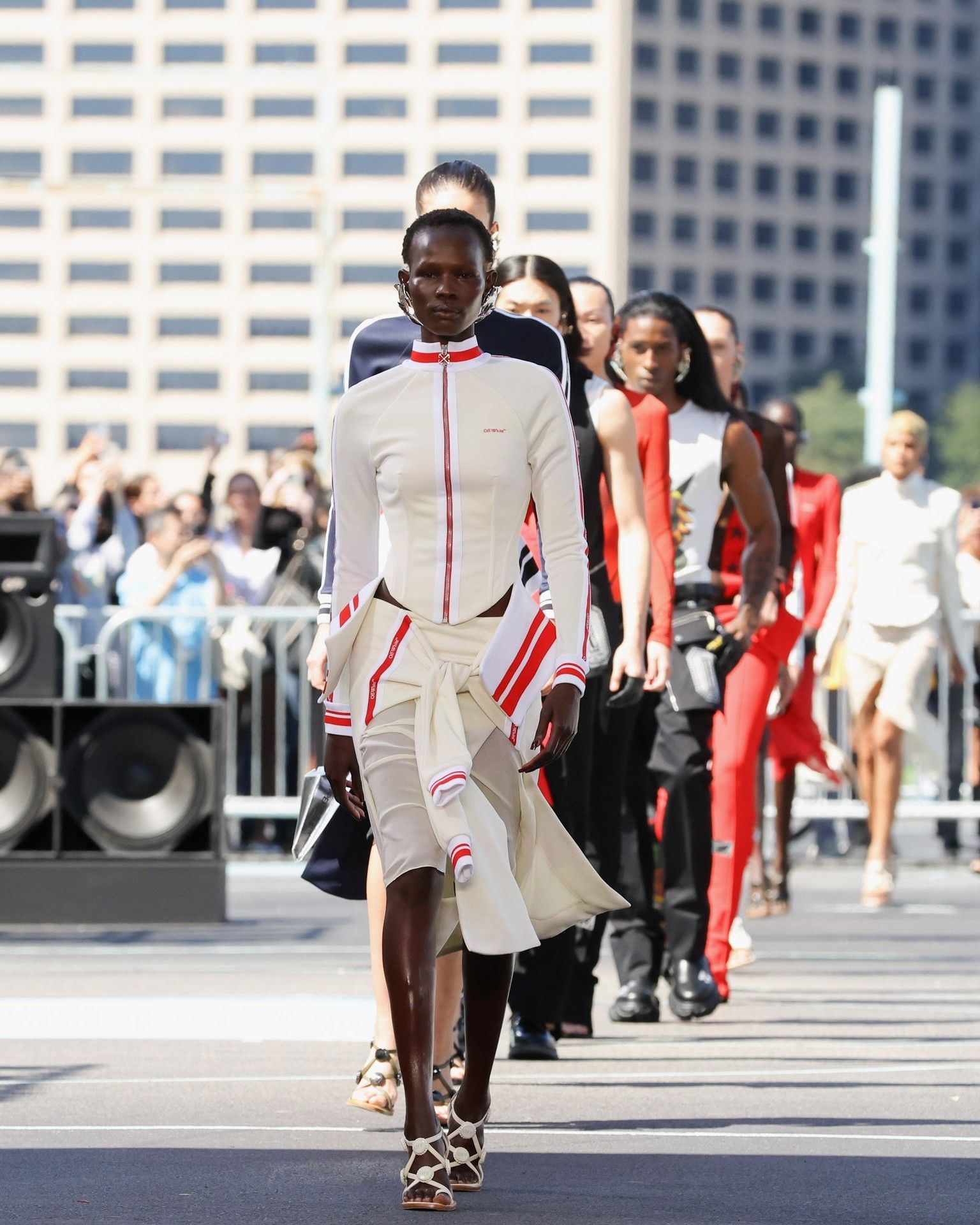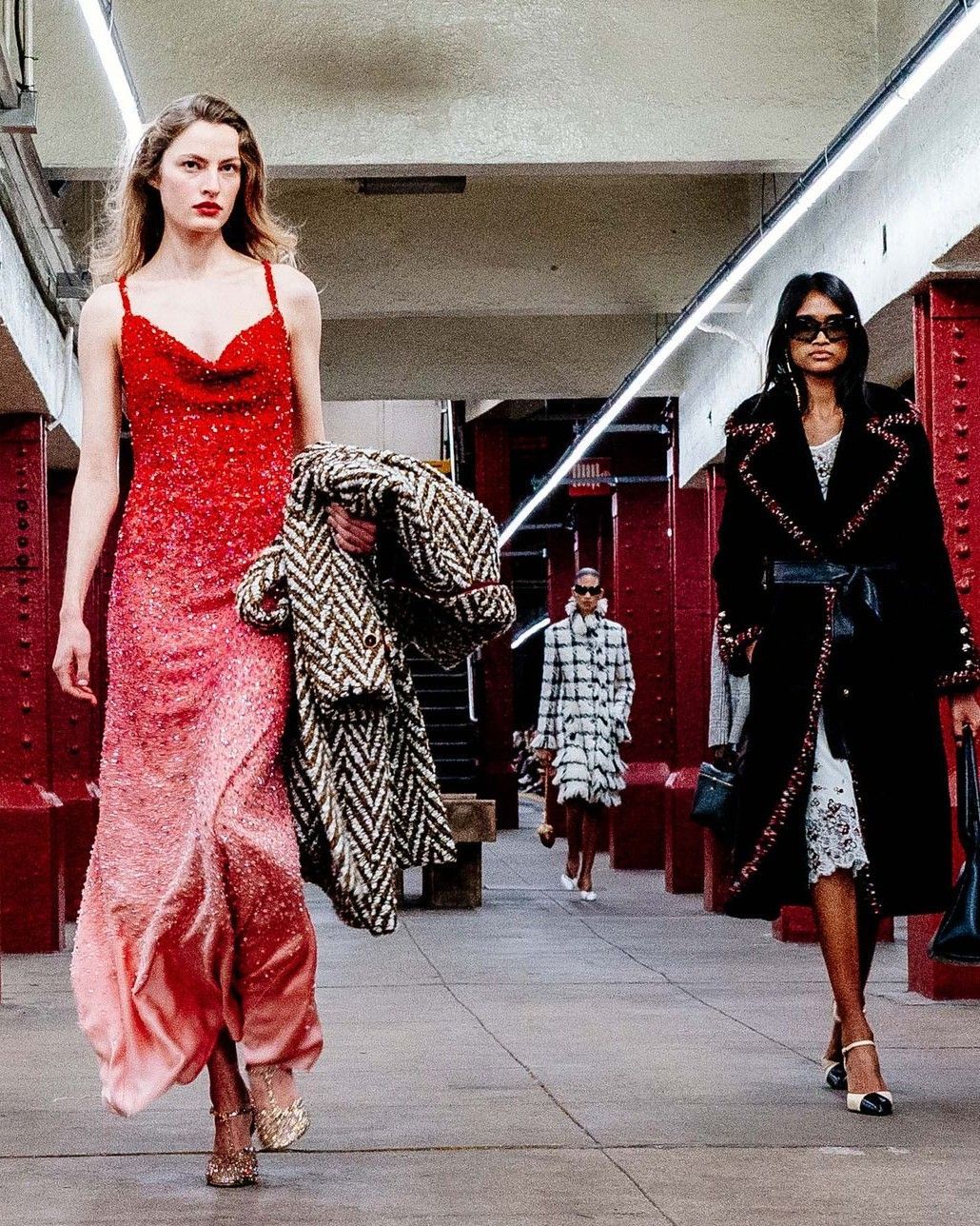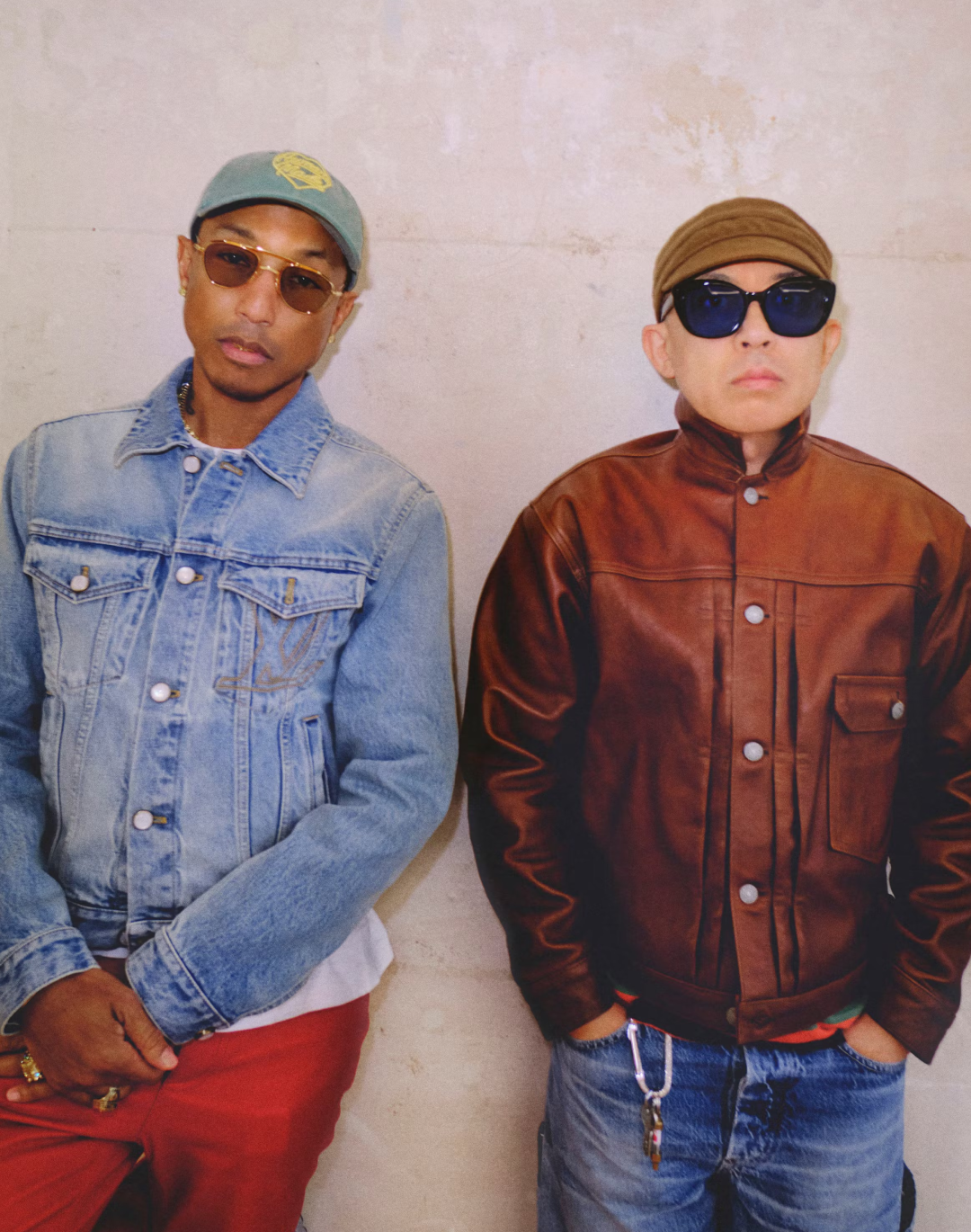
Is there still room for streetwear on the catwalk? Even Off-White abandoned it
The impact that Virgil Abloh had on fashion was monumental – so much so that it’s still common, among design school collections, to find two or three young students, more often men than not, creating streetwear collections as their final projects. These consist of tracksuits, pants halfway between gorpcore and workwear, and hoodies that, in 2024, feel like something outdated. This is a dilemma since these young designers take inspiration from real life, where hoodies and wide-leg technical pants are worn without excessive pretension. The same goes for shoes like the Nike Dunk, terribly widespread, terribly comfortable, and also terribly passé – too omnipresent and clichéd to have anything more to say. In short, streetwear today lives a double life: on the one hand, it's sought after and worn as a preferred daily wardrobe, especially with technical and functional accents; on the other hand, it cannot be said that this diffusion corresponds to a fashion movement. In fact, the hypebeast is now a relic of the past, a figure clinging to a simplistic and commercial concept of fashion. Even the streetwear brands still operating in the market today share this sentiment: Kith designs suits with Armani; Jerry Lorenzo produces tailoring, relegating sportswear to the ESSENTIALS line; Stussy, Palace, and Supreme have embraced old-school lines and significant collaborations. Even Off-White seems to have left it behind in its latest show.
@off____white Off-White Spring Summer 2025 show titled “DUTY FREE” by creative director Ib Kamara at Brooklyn Bridge Park, Pier 2, New York, 11202, USA #OffWhite #SS25 #DUTYFREE #Show #NYC original sound - off____white
The absence of streetwear as it’s commonly understood at the brand’s New York show, now led by Ib Kamara, who remained at the helm through a difficult period for the brand, also caught the attention of Rachel Tashjian of the Washington Post. She rightly asked whether streetwear was, in fact, irrevocably over, as Kamara seemed to have abandoned it this year. And indeed, at Off-White’s latest show, while sportswear inspiration was visible, Kamara finally took the step of finding a new silhouette, recovering some coherence and completeness in his language. What has disappeared are not so much the commonly understood streetwear pieces, but rather the more easily commercial pieces: hoodies, sneakers, sports jackets, garishly synthetic colors, graphics, and ornaments that no longer impress anyone. Elsewhere, during the latest fashion shows, the same vibe could be felt: Willy Chavarria used hockey jerseys, hats, and branded sweatshirts, even collaborative designs with Adidas, but to tell a story in which streetwear is more of a tool than the subject of the narrative, used to describe "the street" but from a more mature, in some ways more cultured perspective. In London, Skepta took a decidedly different inspiration for the second collection of his Mains, abandoning tracksuits and all-over printed suits with visible logos for a more mature selection of suits, knitwear, and leather shoes, where even the denim sets covered in graphics were presented with a shirt and tie. Even Corteiz, while becoming a modern commercial phenomenon, operates in a youthful dimension, very peripheral to fashion.
In short, to answer the question posed by Rachel Tashjian after the Off-White show, streetwear isn’t dead, but it has been redefined; it has simply found its proper place. And that place is in the everyday realm, which today, more than ever, has been incorporated into the lexicon of fashion as a supporting element, not a totalizing look. After all, even Abloh himself, back in 2019, had predicted that hoodies, sneakers, and branded t-shirts would stop drawing crazed crowds. In short, streetwear no longer has a place on the runway, and when it does, in the best cases like that of Chevarria or even Martine Rose, it serves as a narrative channel to realistically represent the expressions of a certain community, but always with an artistic direction, almost never literally. Streetwear’s place, ultimately, is more in real life than in fashion, which deals with other dreams and aspirations. Or, as Tashjian herself resolves the contradiction: «Perhaps streetwear isn’t dead after all. It may not tell us where fashion is going, but it remains the foundation of many people’s closets».














































